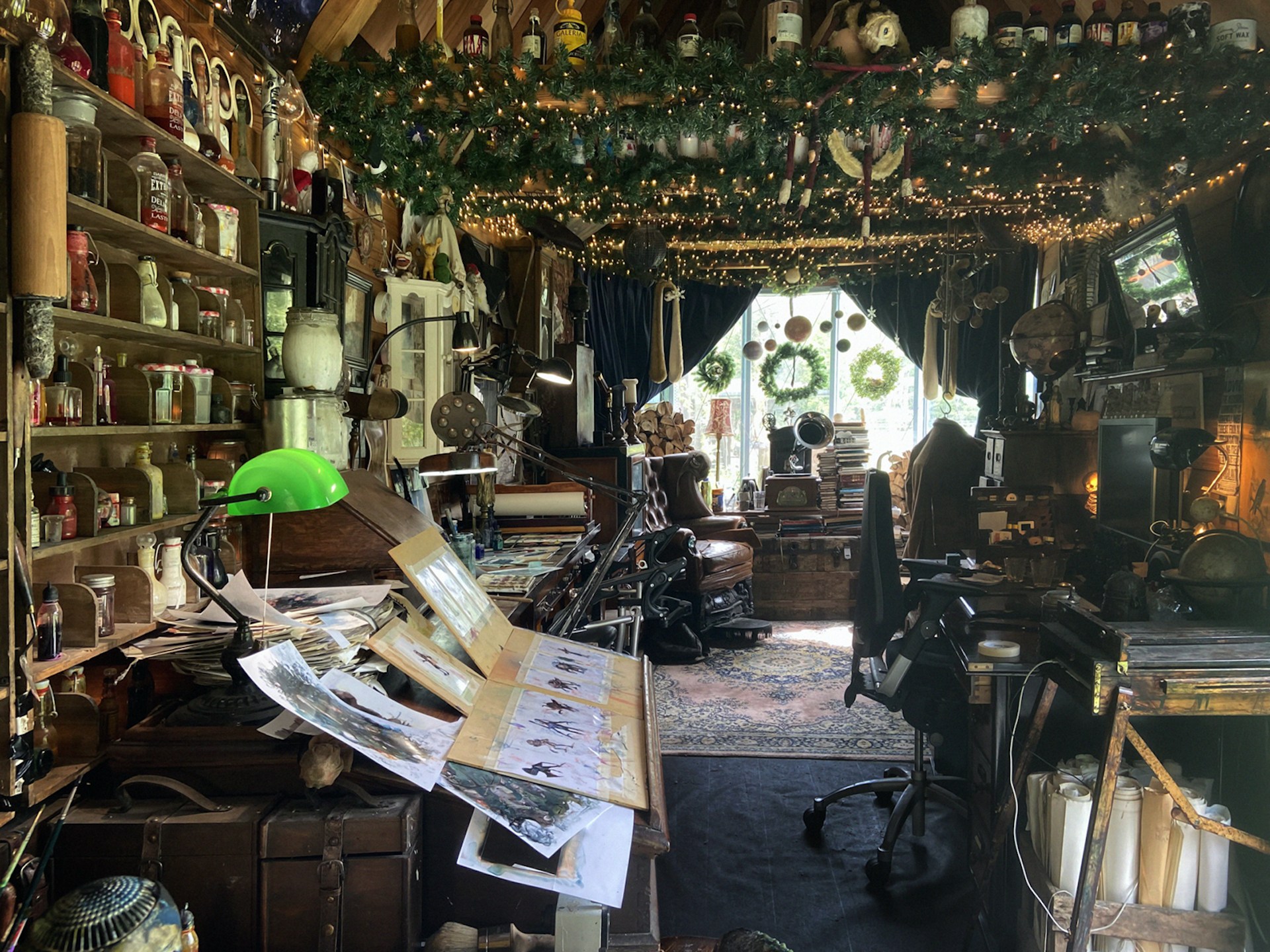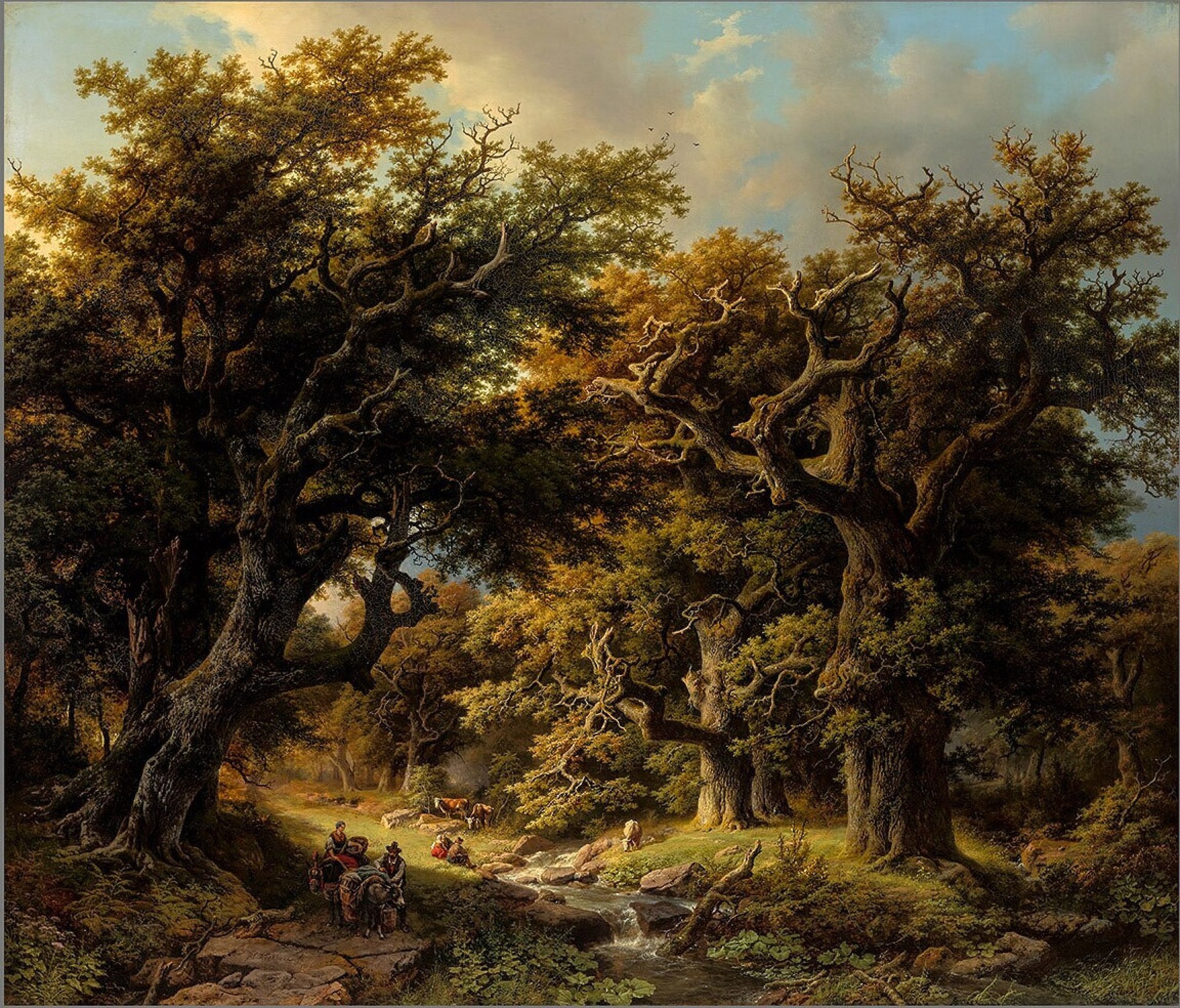We visited Dutch artist Chris Berens in his Amsterdam studio, to talk about his The Witcher painting No Gods nor Masters. A laborious work full of fantastic forest creatures in a clearing in the Velen forest; creatures that feel ethereal and grounded at the same time.
It is a dry, hot summer day when I lock my bike in the high grass next to Chris Berens' studio. Situated at the outskirts of Amsterdam, the Netherlands, I find myself caught in a twilight zone between the bustling city life of the Dutch capital and the tranquility of nature, illustrated by bees zooming about and a butterfly landing on my bike bell.
It's this in-between world where the Dutch artist is at home, he says, after we choose the coolness of his studio over a sun-drenched outdoor bench for our interview. A studio based in a wooden "tiny house" that's crammed with the materials used for his craft, but could also double as a thrift store or some kind of museum: art books pile up high, and there's a phonograph with a large silver horn in one corner. A classic pendulum clock keeps track of the time for us, piercing this tranquil world with its soft bronze chimes.
It is a dry, hot summer day when I lock my bike in the high grass next to Chris Berens' studio. Situated at the outskirts of Amsterdam, the Netherlands, I find myself caught in a twilight zone between the bustling city life of the Dutch capital and the tranquility of nature, illustrated by bees zooming about and a butterfly landing on my bike bell.
It's this in-between world where the Dutch artist is at home, he says, after we choose the coolness of his studio over a sun-drenched outdoor bench for our interview. A studio based in a wooden "tiny house" that's crammed with the materials used for his craft, but could also double as a thrift store or some kind of museum: art books pile up high, and there's a phonograph with a large silver horn in one corner. A classic pendulum clock keeps track of the time for us, piercing this tranquil world with its soft bronze chimes.






